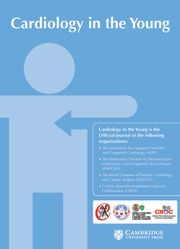No CrossRef data available.
Article contents
An exceptional anomaly of the coronary venous drainage: anatomic description
Published online by Cambridge University Press: 18 November 2024
Abstract
Anomalies of the coronary sinus are rare in the general population but are more frequent in patients with congenital heart defects. Whatever the cardiac anatomy, the coronary sinus is invariably located in the left atrioventricular sulcus, inferior to the wall of the morphologically left atrium.
A complete morphological examination of a fetal cardiac specimen of the M3C collection, according to segmental analysis, was performed by two observers.
We report here for the first time a cardiac specimen with a venous channel receiving the majority of coronary veins, located in the right atrioventricular sulcus and therefore inferior to the wall of the morphologically right atrium, in a fetal cardiac specimen with congenitally corrected transposition in situs solitus. In addition, the anatomy of the venous drainage of the heart was mirror-imaged to that observed in a normal heart and different compared to that usually observed in congenitally corrected transposition.
This very particular anatomy occurring in association with congenitally corrected transposition might be related with an additional disturbance in the laterality pathway.
Keywords
- Type
- Original Article
- Information
- Copyright
- © The Author(s), 2024. Published by Cambridge University Press



